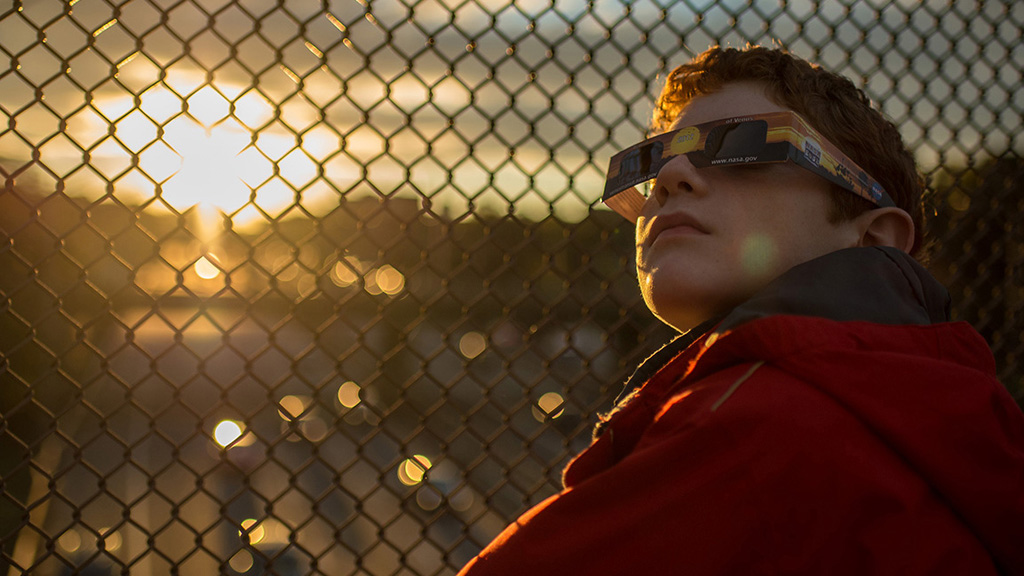Watching the Friendly Skies - Eclipse Safety Tutorial
Music Credit: Chic to Chic by Piero Piccioni
Watch this video on the NASA Goddard YouTube channel.
Complete transcript available.
Get ready to view the solar eclipse with these helpful safety tips. No one should ever look directly at the sun, even during an eclipse. Many options for indirect viewing are outlined in this video.
A solar eclipse occurs when the moon blocks any part of the sun. On Monday, August 21, 2017, a solar eclipse will be visible (weather permitting) across all of North America. The whole continent will experience a partial eclipse lasting 2 to 3 hours. Halfway through the event, anyone within a roughly 70-mile-wide path from Oregon to South Carolina will experience a brief total eclipse, when the moon completely blocks the sun’s bright face for up to 2 minutes 40 seconds, turning day into night and making visible the otherwise hidden solar corona — the sun’s outer atmosphere — one of nature’s most awesome sights. Bright stars and planets will become visible as well.
Learn more at https://eclipse2017.nasa.gov
Find more videos about the solar ecilpse on the Sun Eclipse 2017 Gallery page.

Glasses on! GIF
15 second clip illustrating various indirect viewing methods for eclipses. No audio.
Credits
Please give credit for this item to:
NASA's Goddard Space Flight Center
-
Producer
- Genna Duberstein (USRA)
-
Presenters
- Karen Fox (ADNET Systems, Inc.)
- Ryan Fitzgibbons (USRA)
-
Cinematographer
- John Caldwell (Advocates in Manpower Management, Inc.)
-
Editor
- Genna Duberstein (USRA)
-
Graphic designer
- Genna Duberstein (USRA)
Release date
This page was originally published on Wednesday, June 21, 2017.
This page was last updated on Wednesday, May 3, 2023 at 1:47 PM EDT.




